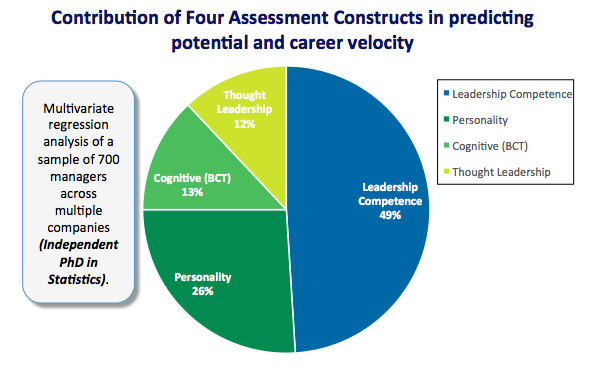Evalex Leadership Framework
Assessment Centre Framework
Does your competence framework tick all the boxes when it comes to developing current and future leaders? Are you able to assess competencies across industries and levels of work, as well as in all verticals, within any organisation, using a single, integrated system?
In any organisation, a good competence framework is key when it comes to recruiting, assessing and developing leaders. The Evalex Leadership Framework is one of the most carefully considered and researched frameworks available to organisations today. It was developed by experienced organisational and industrial psychologists.
The Evalex Leadership Framework is based on the premise that your organisation aims to appoint managers and leaders who will have a clear and significantly positive impact on the environments in which you deploy them. They need to impact the processes, people and customers within the domain of their responsibilities.
Our research indicates that high impact corporate leaders tend to show superior competence in dealing with six key situations or events:
- Problem analysis and decision making
- Function management
- Project management
- Staff management
- Client management
- Interactive management
They tend to distinguish themselves in these situations, where they present a uniquely woven tapestry of competence, thought leadership and emotional maturity.
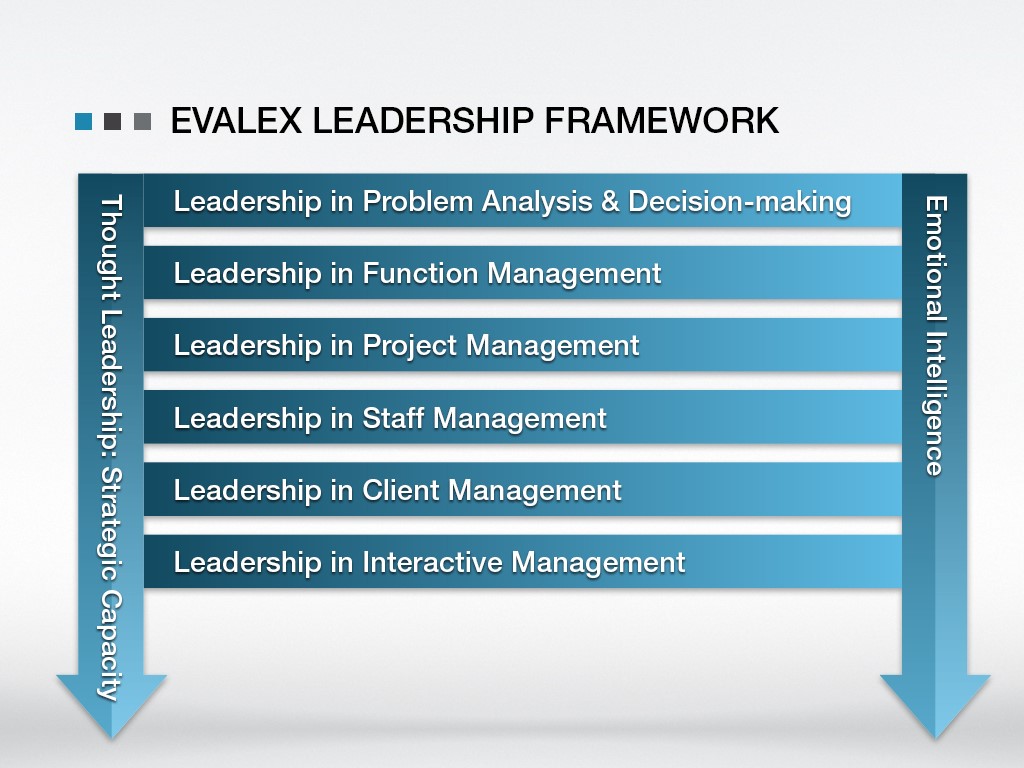
Leadership is all about how effectively we deal with and manage key events. Situations we are presented with on a daily basis, and the accumulation of the incremental additional efficiency that great leaders add to every event, culminate in a visibly distinguished high performance organisation.
The graphic below shows the levels of competence achieved at different management levels.
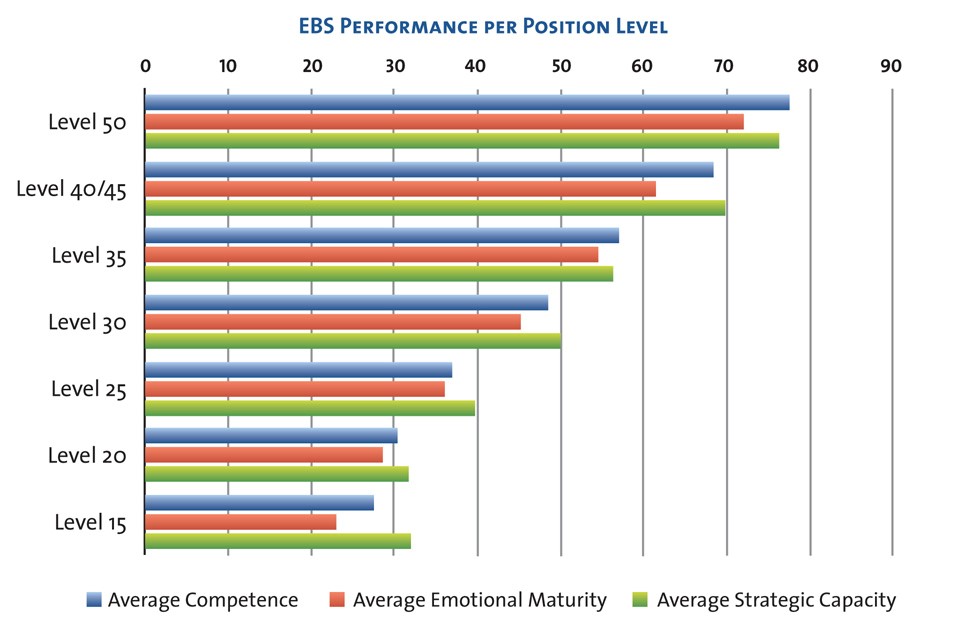
Click here for more information on high impact corporate leadership.
Evalex 360 Leadership framework
The Evalex 360 Leadership Framework is the culmination of extensive research into the value systems and cultural properties of the 4 leading global companies across 8 industries. The distilled essence of these 32 companies was blended with our experience in culture projects within our client companies resulting in the formulation of 5 domains and 19 competencies and the design of a 360 questionnaire enabling a leadership assessment and development process.
The Evalex 360 Leadership Framework is built on the 19 competencies that are prevalent in most jobs, especially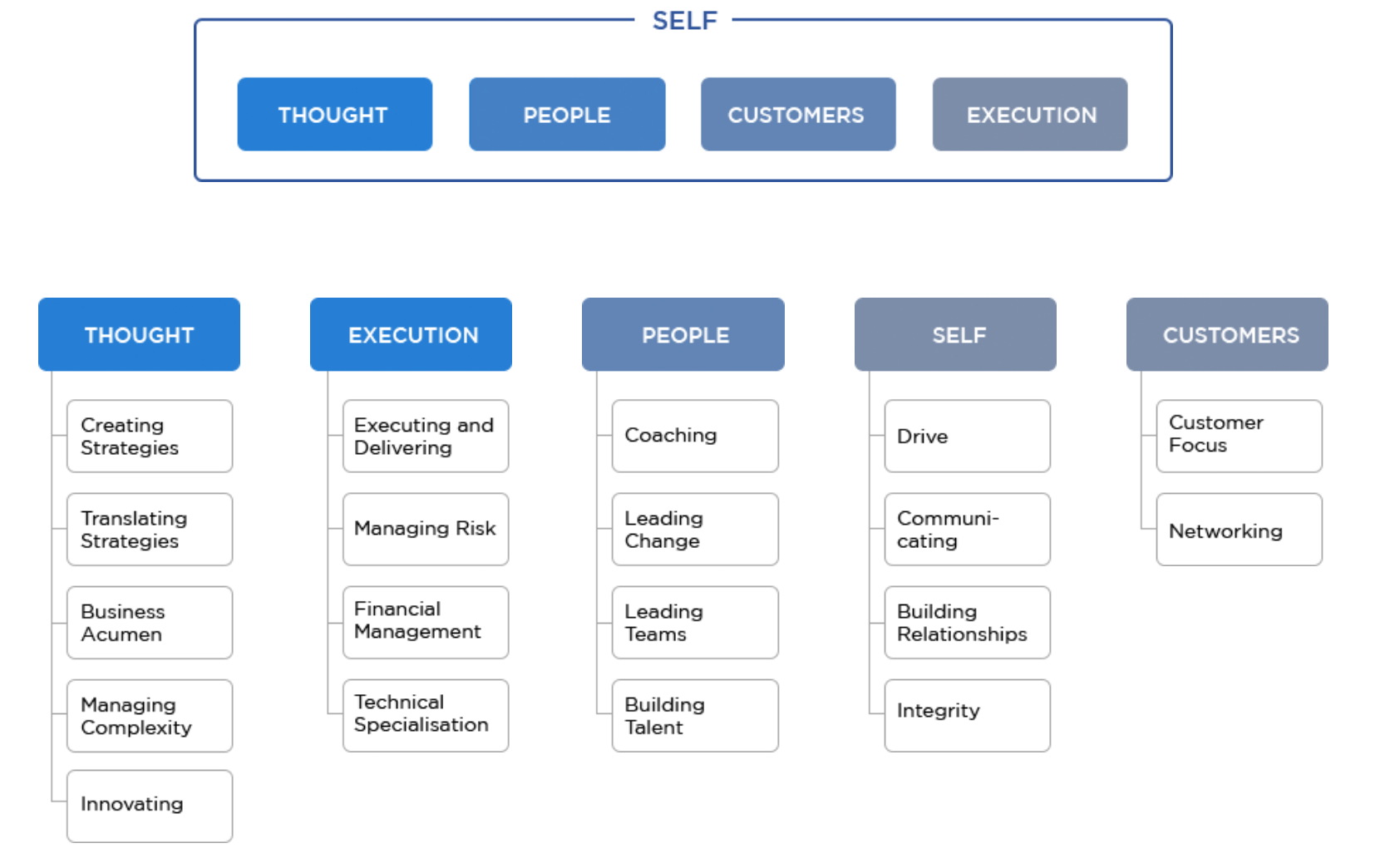 y in leadership roles. Each competency is classified according to five domains – thought, execution, people, self and customers – each of which clearly differentiates the main elements of business. They can even be linked to a balanced scorecard.
y in leadership roles. Each competency is classified according to five domains – thought, execution, people, self and customers – each of which clearly differentiates the main elements of business. They can even be linked to a balanced scorecard.
Competencies are broken down into descriptive facets, which in turn are described according to four levels of work. Of the 19 competencies, nine are aligned to levels ranging from operational to junior, middle and senior leadership. The other 10 competencies are more closely aligned with leadership roles, with levels ranging from junior to executive leadership. The definitions of each competence, facet and level make observation and measurement of the described behaviour easy to carry out.
Key differentiators
The Evalex Enabling Competence Framework:
- is not specific to a company, industry, or domain of work (e.g. IT)
- can be applied to all jobs at all levels, ensuring consistency and comparison
- focuses on how competence may be observed and defined differently at different levels within an organisation
- is defined according to levels of work – building relationships at a senior executive level is vastly different from building relationships at an entry level
- is defined in context – on the understanding that relationships with colleagues, customers and employees exist in different spaces
- defines behaviours in a way that is specific, tangible and observable
- allows competencies to be easily assessed using assessment centre technology, 360° methodologies or psychometrics
- has been developed according to international standards by industrial and organisational psychologists, who bring a wealth of knowledge about behavioural definition and measurement, construct creation, work sampling and other techniques to bear on the competence framework
Evalex Talent Assessment System
Evalex presents one of the most advanced and integrated assessment systems on the market.

The Evalex Talent Assessment system was conceived in 1980 and has evolved over time through research and application. It was first written into a computer application in 1986, with revisions in 1992, then enhanced as an Internet-based assessment tool in 2000, with constant upgrades and expansion. It is now one of the most advanced Internet-based assessment platforms on the market.
What makes the Evalex Talent Assessment System unique and differentiates it from others available on the market is the incorporation of four distinctly different assessment technologies for the assessment of cognitive, behavioural, leadership and technical competencies.
Most other systems focus either on assessing only behavioural competencies or management competencies. They therefore present either ability/personality/styles/motives questionnaires or only assessment centres, but are not strong on providing both or the inclusion of technical competencies.
Four Main Technologies
Evalex is the only assessment platform that integrates four major assessment technologies into one solution, namely:
- Assessment centre technology
- Psychometrics
- The Evalex Competence Inventory (business and technical competencies)
- Digital animated interactive exercises
Integration of Four Technologies into One Assessment Session
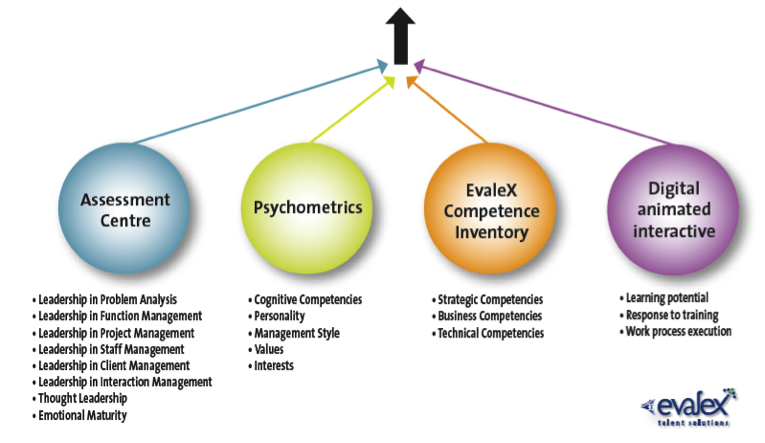
Ours is the only assessment platform where the psychologist can create an integrated assessment session combining six assessment centre simulations/case studies and multiple psychometric tools that the candidate can complete in one online session, providing a totally integrated report across all the tools.
What makes Evalex unique is that, based on years of experience and research, we have developed our own assessment technology consisting of a range of assessment instruments that can assess:
- Cognitive competencies
- Leadership competencies
- Behavioural competencies
- Business competencies
- Technical competencies
- Learning potential
The system can handle the following moments of truth in the assessment value chain:
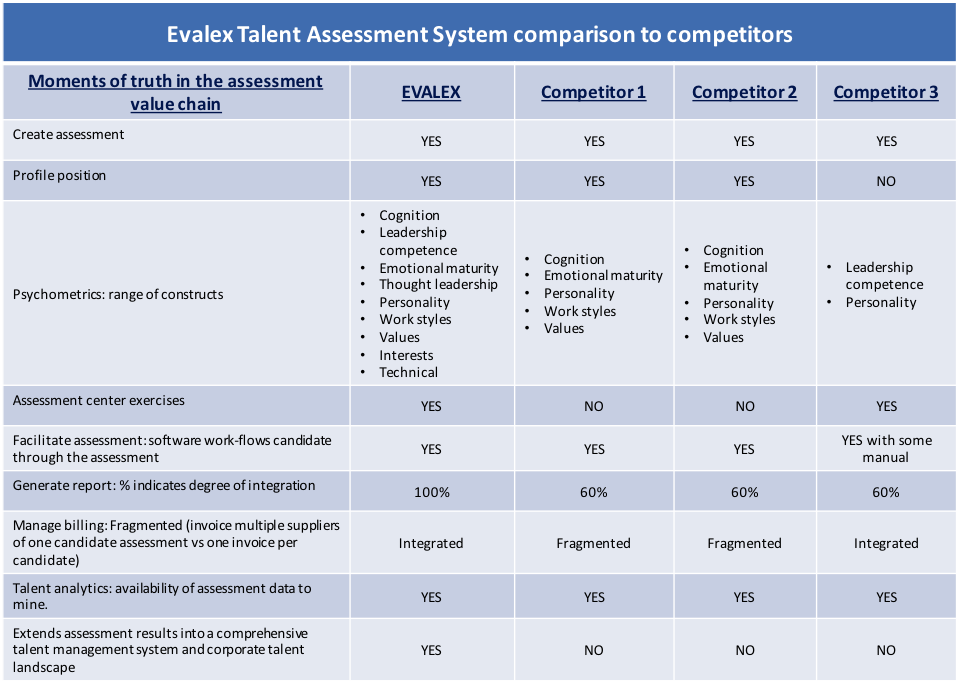
Evalex Business Simulation
What predicts leadership potential best and how do we assess this?
Some of the most crucial decisions to made in the talent management space are as follows:
- Recruitment: Which candidate from a shortlist should we appoint?
- Promotion: Is a manager ready for promotion? Should we promote from within rather than appoint from outside?
- Development and succession planning: What development would a manager need to move to the next level?
Knowing how a candidate will perform based on interviews, CVs and reference checks is often a shot in the dark. Research has shown that these indirect techniques have a very low predictive validity. Imagine if you could immerse your candidate in the role on a trial basis before making any hiring or promotion decisions. Obviously this is not a practical solution. The next best thing, however, is to create a simulated environment for your candidate to operate in.
To resolve this issue, we first need to ask two crucial questions. Firstly, what is a true indication of leadership success? The second question flows from the first: Which assessment technique predicts potential and talent the best? Cognitive tests, personality inventories or management simulations?
This statement perfectly sums up the true indication of leadership success:
“When wrestling on a daily basis with competitor, market, client and staff challenges, it is natural to assume that, on balance, those who survive these skirmishes best will naturally escalate to more senior positions.”
The career track record of an individual, the progression from one level of work to the next level of complexity, combined with the staying power at that next level, only to be promoted to deal with an even higher level of complexity, may well be the ultimate measure of leadership success.
Leadership is about how effectively we deal with and manage key events. Situations we are presented with on a daily basis, and the accumulation of the incremental additional efficiency that great leaders add to every event, culminate in visibly distinguished high-performance organisation.
The solution
If true success is achieved by dealing efficiently with the situations and challenges in our environment, why rely on cognitive and personality tests alone (both of which simply indicate a propensity to behave in a certain way) when we can submit the candidate to a real-life simulation of the job s/he will have to perform? The solution is the Evalex Business Simulation (EBS). By immersing the candidate in a simulated management environment we measure actual competencies when it come to dealing with the typical issues s/he will face once appointed or promoted. We measure real behaviour, not hypothetical behaviour.
What does the research say?
In our insights section you will find research publications providing a detailed research results, but let us just consider the highlights of that research here.
Our own research indicated that leadership competencies assessed through EBS had the highest predictive validity, followed by cognitive, then personality and level of work tests. By predictive validity we mean the ability to accurately predict future performance from the performance in the assessments.
These findings correspond to two other major research studies, namely Sackett, Shewach and Keiser (University of Minnesota, 2015) and Woehr, Matthew and Fleisher (University of Tennessee, 2008).
From the analysis it would seem that leadership competence simulations identify the majority of variances in job level, no matter how you model them. Conversely, in only conducting cognitive and personality test, less than half the story of an individual’s potential is explained.
The graphic below explains the extent to which different assessment methodologies predict potential and performance.
The research provides sound evidence and justification why the Evalex35 Leadership Assessment solution consists of management simulation, cognitive and personality tests – the results of which lead to a balanced statement about an individual’s potential.
Clearly in assembling a management or leadership assessment battery, the foundational instrument, the starting point, should be assessment centre simulations, augmented by cognitive or levels of work assessments, and personality tests. Unfortunately, most companies mainly use the cognitive-personality combination.
Latest research findings put forward a strong case for assessment centres as more powerful predictors than cognitive and personality tests. This is leading to a shift in our understanding of what drives executive success.
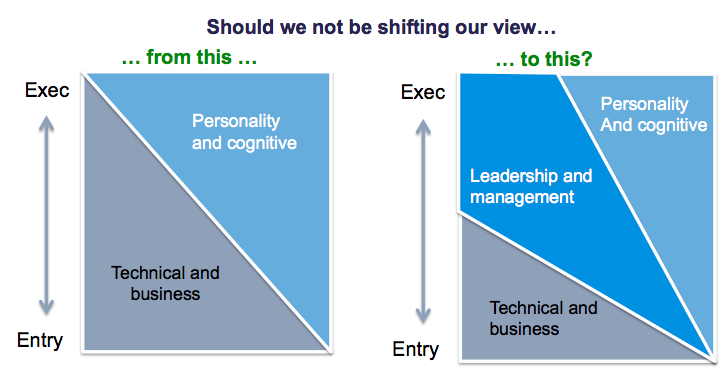
EBS in action
Leadership must be one of the most critical challenges in any organisations and In developing business leadership, it is crucial to use the correct assessment approaches to identify talent in order to reap the best return on subsequent development efforts. Using a less than optimal solution in assessing candidates for managerial and leadership roles can waste valuable time and resources.
EBS is an online, cloud-based assessment centre that puts candidates through their paces in six management simulations to assess management competence, emotional maturity and thought leadership.
The EBS solution synthesises leadership competence, thought leadership, personality and styles (optional with Evalex Psychometrics), experience and performance into a talent classification and leader utilisation strategy. It is a powerful product that allows you to gather comprehensive talent intelligence on each leader in your company. This data is run through our advanced talent management software to provide a rich tapestry of information at both individual and corporate level.
At an individual level, EBS produces:
- A talent strategy for each leader
- Development plans for each leader
- Talent fit to current role
- Talent fit to future roles
- A development plan to move from current to future role
At a corporate level, EBS provides:
- Information on the quality and depth of talent at each level of management
- Identification of which levels of management are either at risk or conversely well stocked with talent
- Your company’s talent pipeline, benchmarked against other organisations locally and globally
- Leadership development priorities for incorporation into your corporate leadership development strategy
During the four-hour Evalex Business Simulation, the candidate is required to respond to around 30 typical organisational and business issues. The way s/he deals with these issues projects his/her competencies, thought leadership, emotional maturity, management style, business knowledge and experience.
Responses are analysed by highly trained and experienced organisational psychologists. The candidate’s performance is compared against position-level benchmarks based on the Levels of Work framework, allowing us to form a picture of the level and type of position where this individual should be optimally utilised.
Leadership situations
To be effective, a leader must be able to deal effectively with six critical management situations, all of which are dealt with in EBS.
Leadership in problem analysis and decision-making (digital animated interactive performance-based exercise): EBS present a business problem in an online environment where the candidate interacts with information in a dynamic way to assess problem solving and decision effectiveness competence.
Leadership in general management (inbox): Typical organisational and management issues are dealt with, such as procurement, process design, cash flow and analysis of financial figures.
Leadership in project management (business case): This involves translating strategic direction of the business into a project plan.
Leadership in staff management (caselets): This includes typical staff management issues such as performance, skills development, remuneration and unions.
Leadership in client relationship management (caselets): Here we look at typical client management issues including service delivery, client complaints and pricing.
Leadership in interaction management (role play) A number of business issues are dealt with in an interactive situation.




